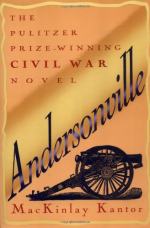The scarcity of mechanics of all kinds in the Confederacy, and the urgent needs of the people for many things which the war and the blockade prevented their obtaining, led to continual inducements being offered to the artizans among us to go outside and work at their trade. Shoemakers seemed most in demand; next to these blacksmiths, machinists, molders and metal workers generally. Not a week passed during my imprisonment that I did not see a Rebel emissary of some kind about the prison seeking to engage skilled workmen for some purpose or another. While in Richmond the managers of the Tredegar Iron Works were brazen and persistent in their efforts to seduce what are termed “malleable iron workers,” to enter their employ. A boy who was master of any one of the commoner trades had but to make his wishes known, and he would be allowed to go out on parole to work. I was a printer, and I think that at least a dozen times I was approached by Rebel publishers with offers of a parole, and work at good prices. One from Columbia, S. C., offered me two dollars and a half a “thousand” for composition. As the highest price for such work that I had received before enlisting was thirty cents a thousand, this seemed a chance to accumulate untold wealth. Since a man working in day time can set from thirty-five to fifty “thousand” a week, this would make weekly wages run from eighty-seven dollars and fifty cents to one hundred and twenty-five dollars—but it was in Confederate money, then worth from ten to twenty cents on the dollar.
Still better offers were made to iron workers of all kinds, to shoemakers, tanners, weavers, tailors, hatters, engineers, machinists, millers, railroad men, and similar tradesmen. Any of these could have made a handsome thing by accepting the offers made them almost weekly. As nearly all in the prison had useful trades, it would have been of immense benefit to the Confederacy if they could have been induced to work at them. There is no measuring the benefit it would have been to the Southern cause if all the hundreds of tanners and shoemakers in the Stockade could have, been persuaded to go outside and labor in providing leather and shoes for the almost shoeless




